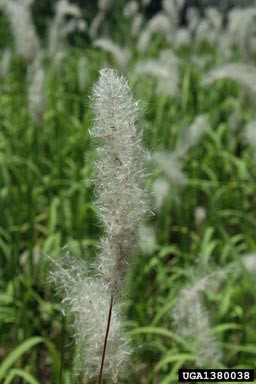Cogongrass
Emerging Threat Note: While this invasive plant was initially detected in Tennessee in 2008, it was successfully eradicated by 2012. However, it does remain a noxious weed that we monitor for and encourage residents to report potential sightings.
Introduction
Cogongrass has been named one of the 10 worst weeds in the world. Native to Southeast Asia, cogongrass was introduced to the southeastern U.S. over a century ago and has rapidly invaded disturbed areas across the southeastern U.S., including pastures, fallow fields, forests, and highway and powerline rights-of-way. Seeds are typically wind-dispersed, but the plant can spread vegetatively through rhizomes (roots); these rhizomes can be spread to new places on vehicles and equipment. Cogongrass produces upright stems up to 4’ tall, and usually grows so thick it crowds out competing vegetation.
Identification
Stems are generally light green with a yellowish color. The midrib of leaves is offset (not in the center of the leaf). Cogongrass flowers early in the growing season (spring), whereas most native grasses flower in summer or fall.
Management
Control of cogongrass is difficult, time-consuming, and expensive, involving a combination of mechanical and chemical treatments. There are no known effective biological control methods.

